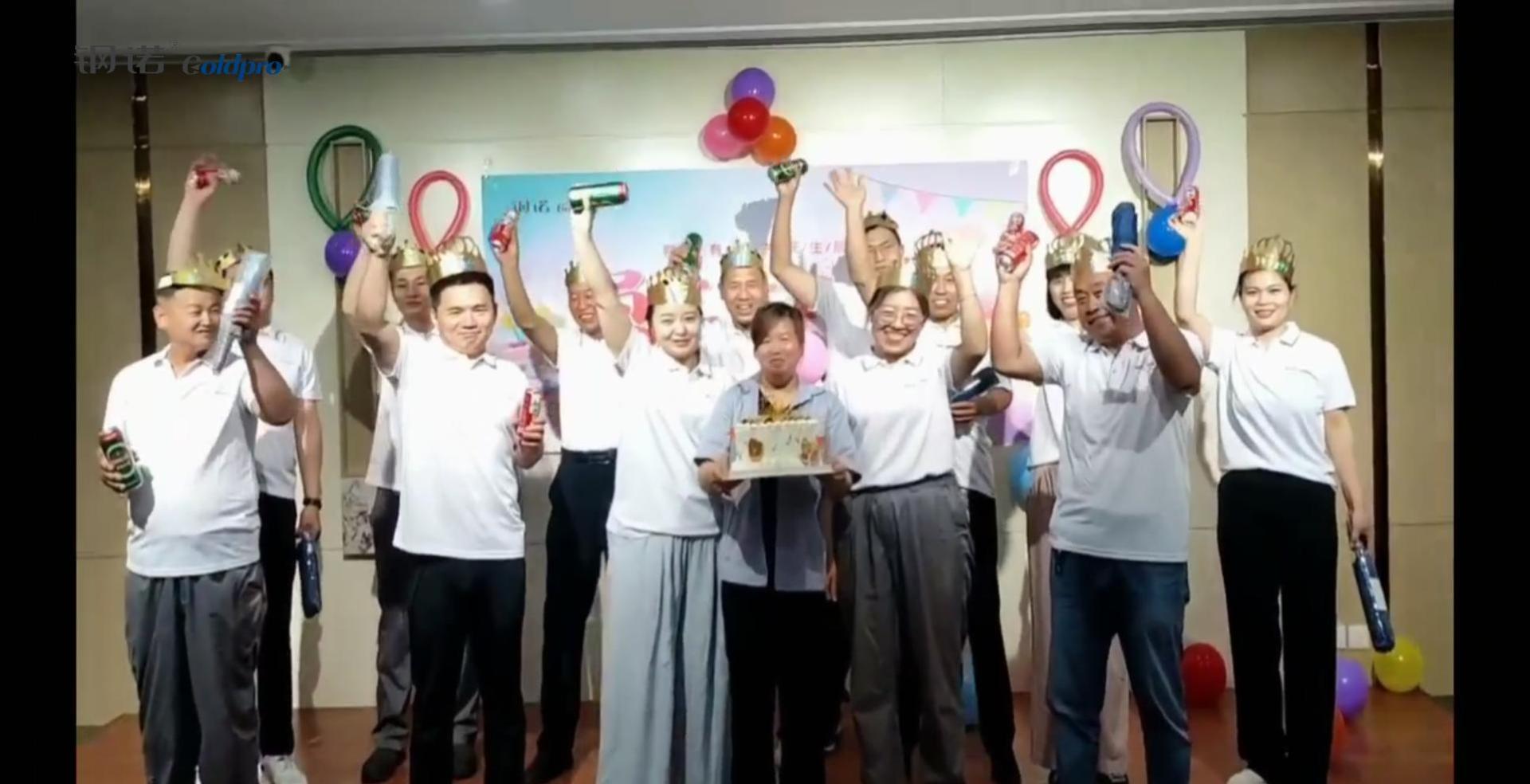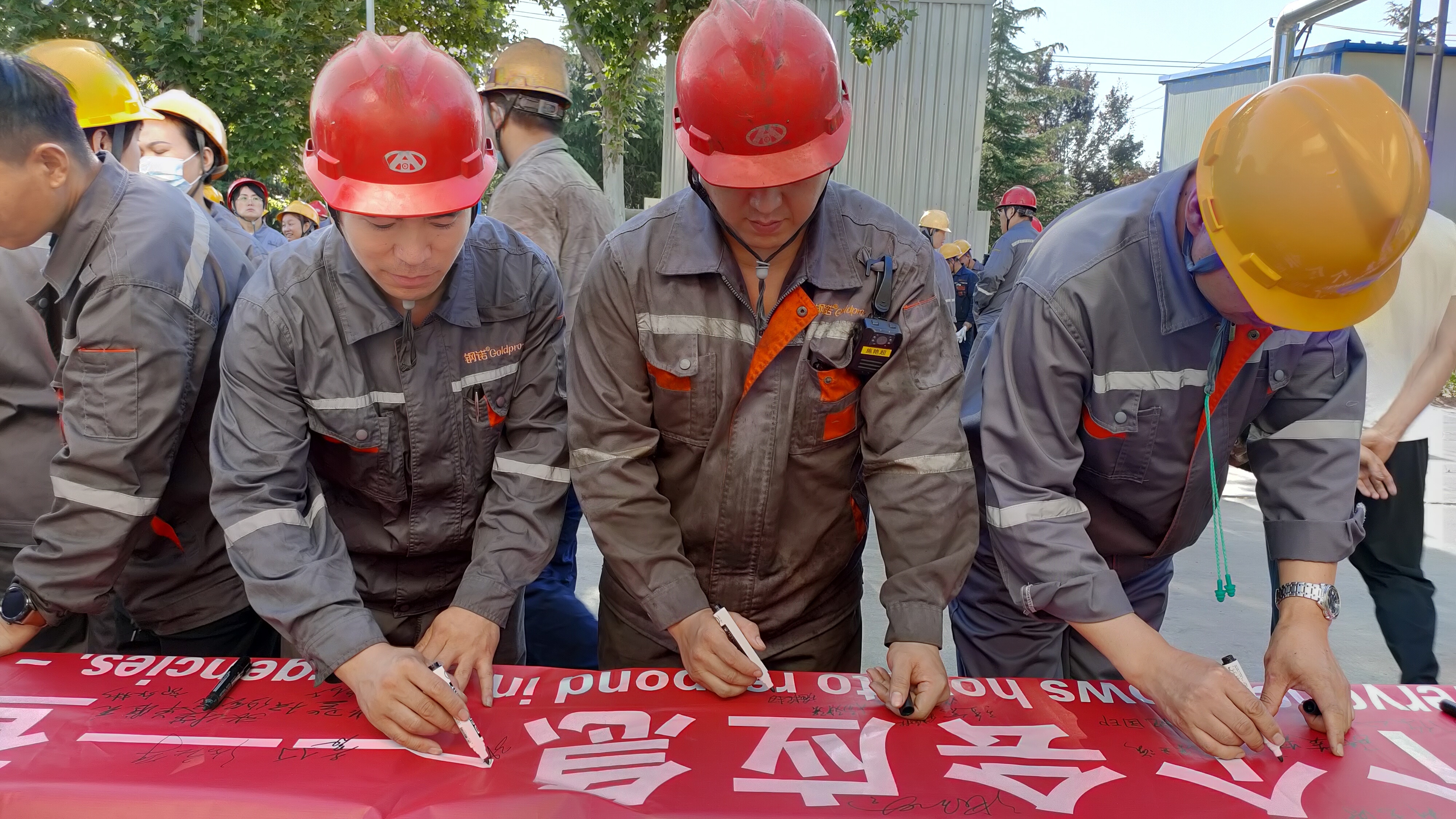Attention miners, major changes are coming to mineral resource management!
Mar 12,2021
Strictly control the transfer of mining rights by agreement, and comprehensively promote competitive transfer of mining rights. The main purpose is to address the problem of "black-box operations" easily leading to corruption, treat all types of market entities equally, and better leverage the decisive role of the market in resource allocation.
Promoting Mineral Resource Management Reform Requires a Change in Mindset
To implement the decisions and deployments of the Party Central Committee and the State Council, and address prominent issues in mineral resource management over the years, the Ministry of Natural Resources issued the "Opinions on Several Matters Concerning the Promotion of Mineral Resource Management Reform (Trial)", the original text is here! It made a series of significant institutional innovations regarding the establishment and implementation of the mining right transfer system, optimization of oil and gas mining right management, and reform of mineral resource reserve classification and management methods, reflecting a major shift in the concept of mining right management.
The "Grant + Approval" Model for Mining Right Transfer Must Be Abandoned
The core of the "Opinions" is the comprehensive promotion of competitive transfer of mining rights. Some people within the system believe that the transfer of mining rights through bidding, auction, and listing is nothing new. As early as 2003, the former Ministry of Land and Resources issued the "Administrative Measures for the Bidding, Auction, and Listing of Exploration and Mining Rights (Trial)" (Guo Tu Zi Fa [2003] No. 197), and in 2006, it further issued the "Notice on Further Regulating the Management of Mining Right Transfer" (Guo Tu Zi Fa [2006] No. 12). In practice, how is competitive transfer of mining rights operated? Let's look at an example. Around 2010, entrusted by the former Ministry of Land and Resources, a provincial land and resources department in northern China conducted a bidding, auction, and listing process to transfer a coal mining right. A certain state-owned enterprise won the mining right for over 7 billion yuan. After the bidding, auction, and listing, the enterprise paid the price according to the bidding result, but when applying for the mining permit, it was informed that a series of prerequisite procedures, such as project establishment, application for delineation of mining area, review of mineral resource development and utilization plan, and environmental impact assessment, needed to be completed first. Due to issues with these prerequisite procedures, the enterprise was unable to obtain the mining permit for this mine until early 2017. The enterprise paid a high price for the mining right but was unable to carry out coal production for a long time, and the financial cost during this period exceeded 1 billion yuan. This sounds unbelievable, but in essence, for many years, the natural resources system has turned the competitive transfer of mining rights into a simple "grant + approval" process. The comprehensive competitive transfer of mining rights proposed in these "Opinions" is not a direct replication of the classified transfer system for mining rights implemented since 2003, but rather aims to re-engineer the mining right transfer system to genuinely safeguard the legitimate rights and interests of mining right holders.
First, the transfer of mining rights is initiated proactively by the natural resources department. Transfer and approval are two completely different management models. Approval is initiated by the application of a party; if the party does not apply, the administrative agency cannot initiate it proactively. Transfer, on the other hand, is initiated proactively by the administrative agency. When organizing the transfer of mining rights, the natural resources department must formulate a scientific and feasible mining right transfer plan based on mineral resource planning, monitoring of the mining right market, and relevant geological survey results. To enhance the scientific nature of the transfer plan, opinions from social investors can be fully solicited during its formulation.
Second, adjust 'Grant + Approval' to 'Grant + Registration'. This no longer entails a physical superposition of bidding, auction, and listing for the transfer of mining rights with the original mining right approval and registration procedures, meaning that after the winning bidder signs a mining right transfer contract with the natural resources department, they only gain the qualification to apply for mining rights and still need to go through approval procedures to determine whether they can obtain the mining rights. This practice does not conform to basic legal logic; the same mining right cannot be both granted and approved. When the natural resources department signs a transfer contract with the winning bidder, it means granting the mining right to the winning bidder, after which only property right registration is required, without the need for further administrative approval procedures.
Third, 'Grant + Registration' does not mean abandoning government supervision. Mineral resource exploration and exploitation activities have strong externality characteristics and must be subject to necessary government regulation. When formulating mineral rights transfer plans, the natural resources authority should include relevant regulatory requirements and conditions such as exploration and exploitation requirements and exploration-to-exploitation requirements in a "package" in the mineral rights transfer announcement and contract, providing social investors with sufficient information and expectations. After transferring mineral rights, the natural resources authority should supervise and manage the exploration and exploitation activities of the mineral right holder in accordance with the regulatory requirements agreed upon in the contract.
It is necessary to comprehensively promote the "clean mining" transfer.
In practice, due to the mismatch between mineral rights transfer and the system of land and sea use for mining, some mining enterprises, although having obtained mineral rights, cannot actually carry out exploration and exploitation activities. To effectively solve this problem, the "Opinions" determines "clean mining" transfer as the goal and direction of reform, effectively protecting the legitimate rights and interests of mineral right holders. Regarding "clean mining" transfer, some people within the system have a sense of difficulty, believing that it is difficult to promote. The author believes that it is necessary to firmly adhere to the reform direction of "clean mining" transfer, respect the laws of geological work and objective reality, and set different "clean mining" requirements according to different situations. For the transfer of exploration rights, since it is impossible to determine the specific location of land and sea use for exploration and exploitation at the time of transfer, it should not be required to handle land and sea use procedures simultaneously at the time of transfer.
However, meeting the following requirements can be regarded as achieving "clean mining" transfer:
First, "cleanliness" in terms of ownership, that is, there are no ownership disputes and conflicts in the proposed transfer block;
Second, "cleanliness" in terms of planning, that is, there are no protected areas, ecological red lines, and other prohibited and restricted areas in the proposed transfer block. These planning conditions should consider not only relevant natural resource management plans, but also environmental protection, safety production, and other relevant departments' planning restrictions and policy restrictions that may affect the implementation of mineral resource exploration and exploitation;
Third, it is necessary to focus on the entire process of exploration and exploitation, and effectively guarantee the land and sea use for exploration and exploitation operations, that is, the transfer of exploration rights should not only guarantee the land and sea use for exploration rights, but also guarantee that when the exploration rights are converted into mining rights in the future, the work can still be carried out smoothly.
It is necessary to do a good job in advance planning coordination, reserve land and sea use indicators for mining, and speed up the approval procedures for land and sea use. For the direct transfer of mining rights, the scope of the mining area and the location of land and sea use can be basically determined at the time of transfer, so it is possible to require the transfer of land use rights and sea area use rights together with the transfer of mining rights, or to handle land and sea use procedures simultaneously. The degree of "clean mining", in addition to ensuring "cleanliness" in terms of ownership and planning, should also distinguish the complexity of different mineral types and determine whether to transfer land use rights and sea area use rights together with the transfer of mining rights, or to handle land and sea use procedures simultaneously. For simultaneous handling of land and sea use procedures, the processing time limit should be shortened and the processing conditions simplified as much as possible to ensure that mineral right holders can obtain land and sea use rights as soon as possible after obtaining mining rights and carry out their work smoothly.
In December 2019, the Ministry of Natural Resources issued and implemented the "Notice of the Ministry of Natural Resources on Implementing the "Two Rights Integration" Bidding and Auction Transfer of Sea Sand Mining Rights and Sea Area Use Rights" (Natural Resources Regulations [2019] No. 5), which is a beneficial exploration of transferring sea sand mining rights and sea area use rights together, achieving the reform goal of simplifying and optimizing the transfer links and procedures for sea sand mining rights and sea area use rights. In addition, to promote "clean mining" transfer, it is necessary to further expand the ways of land and sea use within the existing legal framework, and actively explore the use of various methods such as leasing by mineral right holders to use the land and sea areas needed for exploring and exploiting mineral resources.
The same mineral type transfer registration shall be managed at the same level.
The current authorization for mineral rights transfer is divided according to various standards such as mineral resource reserves, area, and mineral type. The approval authority for exploration rights and mining rights of the same mineral type is inconsistent, and the approval authority for exploration rights and mining rights also changes constantly with the change of reserves. This is not conducive to improving management efficiency, and also makes the licensing authority and responsibility of the ministry and provincial levels always uncertain, bringing great difficulties to the handling of mineral rights disputes. In response to this problem, the "Opinions" implements the same-level management of exploration rights and mining rights transfer registration for the same mineral type while adjusting the management authority of mineral rights transfer. In the future, the Ministry of Natural Resources will be responsible for the transfer registration of exploration rights and mining rights for 14 important strategic minerals such as petroleum and hydrocarbon natural gas; large-scale minerals among strategic minerals will be handled by provincial natural resources authorities; other minerals will be handled by provincial and below natural resources authorities. In other words, in the future, for any mineral type whose exploration rights transfer is handled by the ministry, regardless of how much the reserves change, the mining rights transfer will also be handled by the ministry, and the transfer authority of the ministry and provinces will no longer be adjusted according to the change of reserves. The "Opinions" clarifies the division of transfer authority between the ministry and provinces, and entrusts the provincial natural resources authorities to determine the division of transfer authority below the provincial level. Provincial natural resources authorities should, in conjunction with the actual exploration and development of mineral resources in their province and their administrative management capabilities, quickly clarify the transfer registration authority of provincial and below natural resources authorities. At the same time, the ministry will comprehensively clean up the regulations and normative documents issued in recent years concerning the division of the transfer authority of exploration rights and mining rights. Any documents that are inconsistent with the "Opinions" shall be resolutely abolished to avoid new administrative reconsideration and administrative litigation caused by document conflicts.
Fully implement the integrated oil and gas exploration and exploitation system.
The current Mineral Law stipulates a trial production and rolling exploration and development system for oil and gas exploration rights and mining rights. From the practical process, due to the short trial production period (generally one year), enterprises cannot handle the approval and registration procedures for mining rights in time during the trial production period, resulting in a large number of illegal acts of using exploration in place of exploitation and unlicensed exploitation. To effectively solve this problem, the "Opinions" stipulates an integrated oil and gas exploration and exploitation system, that is, when an oil and gas exploration right holder discovers exploitable oil and gas resources, they can carry out exploitation after reporting to the natural resources authority with registration authority. The oil and gas exploration right holder carrying out exploitation shall sign a mining rights transfer contract within five years and legally handle mining rights registration. This is a major institutional innovation based on the technical logic of oil and gas exploration and exploitation. Unlike the exploration and exploitation stages of solid minerals, which are clearly separated, the stage division of oil and gas mineral resource exploration and exploitation is relatively vague. Generally speaking, oil and gas can be exploited immediately after being found. However, this does not mean that oil and gas exploration and exploitation is just one stage, or even one right. Oil and gas exploration and exploitation activities can still be clearly distinguished into exploration and exploitation stages, and the management requirements of the two stages are also significantly different. The stage of transition from exploration to exploitation is significantly different from that of solid minerals, that is, oil and gas can be exploited immediately after being found. The implementation of the integrated oil and gas exploration and exploitation system gives oil and gas exploration right holders a clearer expectation of rights. It is worth noting that granting special exploitation rights to oil and gas exploration right holders is not without restrictions. Because the management requirements for exploration work and exploitation work are different, the natural resources authority should include relevant management requirements for integrated oil and gas exploration and exploitation, especially how to comply with environmental protection, safety production, and timely handling of mining rights, in the transfer contract when transferring oil and gas exploration rights, to constrain oil and gas mineral right holders to carry out exploration and exploitation activities in accordance with the law and contract.
Exploration rights shall not be set for exploration projects funded by the treasury.
Mineral resources in our country are state-owned. Since the founding of the People's Republic of China, the state has invested a large amount of fiscal funds to support mineral resource exploration. To ensure the smooth implementation of mineral resource exploration activities funded by state finances, for many years, in accordance with the management methods of social investment entities, exploration activities funded by state finances have also registered prospecting rights. This practice is clearly inconsistent with the provisions of the Mineral Resources Law and the Property Law regarding prospecting rights and mining rights as property rights. The Opinions clarify that central or local government-funded exploration projects will no longer establish new prospecting rights. In the future, all levels of natural resources authorities shall no longer set prospecting rights for government-funded exploration projects. Prospecting rights that have already been set before the implementation of the Opinions shall also be cancelled as soon as possible after the expiration of the prospecting rights.
The implementation of the Opinions is of great significance to the amendment of the Mineral Resources Law.
The current Mineral Resources Law was promulgated during the planned economy period. Although it was amended in 1996, its main systems have not been significantly adjusted and can no longer fully adapt to the requirements of building a socialist market economic system and building an ecological civilization. The system of mineral resource management established in the Opinions, which centers on comprehensively promoting the competitive allocation of mining rights, is an incremental reform beyond the provisions of the current Mineral Resources Law. Its purpose is to further give play to the fundamental role of the market in resource allocation and to balance the relationship between mineral resource development and utilization and ecological environmental protection. In 2018, the amendment of the Mineral Resources Law was included in the legislative plan of the Standing Committee of the 13th National People's Congress. The Ministry of Natural Resources attaches great importance to the amendment of the Mineral Resources Law and, on the basis of in-depth research and extensive solicitation of opinions, has formed the "Mineral Resources Law (Draft Amendment)" (submission draft). The provisions of the Opinions on comprehensively promoting the competitive allocation of mining rights, "net mine" allocation, and integrated oil and gas exploration and development are completely consistent with the amendment ideas of the Mineral Resources Law. Therefore, the implementation of the Opinions is of great significance to the amendment of the Mineral Resources Law. The entire system should further change its concepts, earnestly do a good job in the implementation of the Opinions, and lay a practical foundation for the amendment of the Mineral Resources Law. At the same time, in the process of implementing the Opinions, some issues may require further in-depth research and practical exploration to gradually form a system of mining rights management that better meets the requirements of the new era. (Author: Director of the Legal Affairs Department of the Ministry of Natural Resources)







